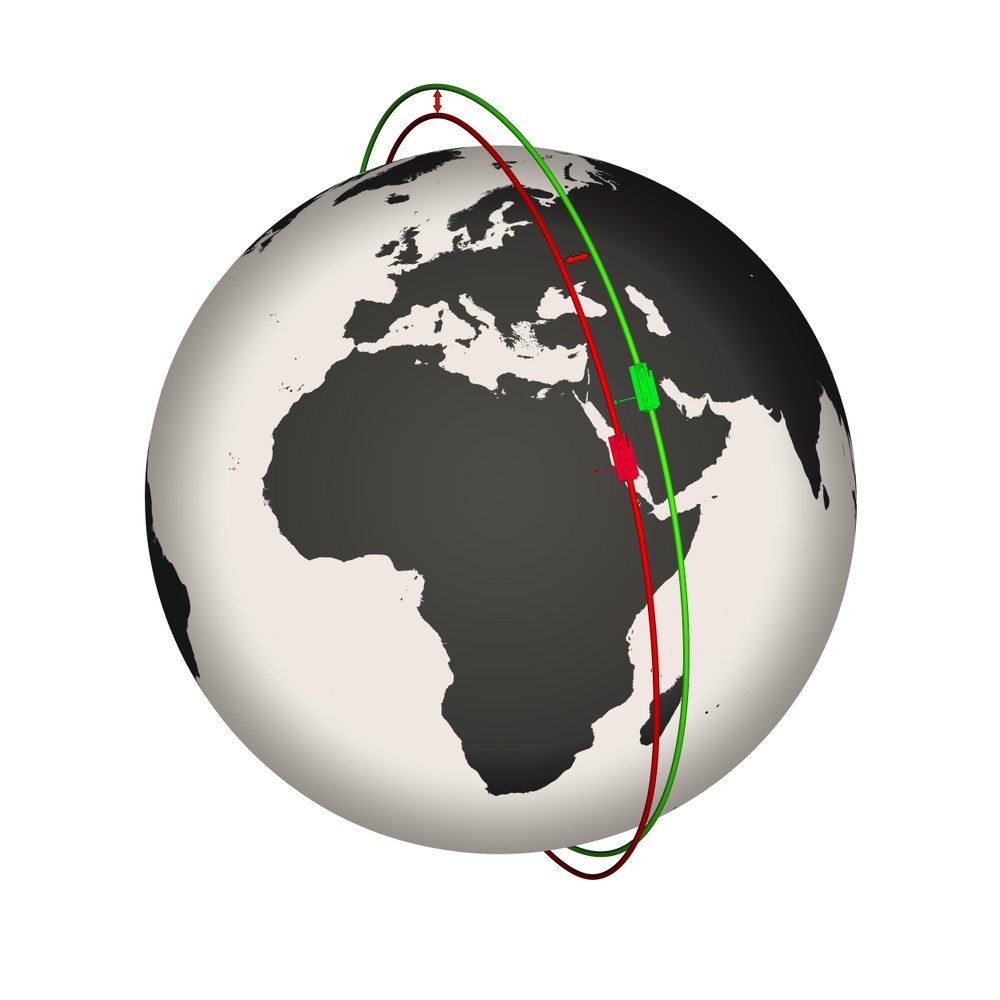The satellite

The TanDEM-X satellite follows the TerraSAR-X design. The idea for the TanDEM-X mission was conceived during the development of the TerraSAR-X satellite. To realise it, the design of the synthetic aperture radar on TerraSAR-X had to be modified slightly to support the synchronous operation of two radars. For the satellite bus, changes on TerraSAR-X were restricted to the software, whereas on TanDEM-X, the hardware was also modified to a limited extent to enable the two satellites to fly in formation.
The satellite measures 5 metres in length and 2.4 metres in diameter. Its hexagonal cross-section fit precisely under the fairing of the Dnepr launcher. The 80-cm-wide synthetic aperture radar antenna points towards Earth on the right-hand side of the satellite's ground track. Because its orbit is Sun-synchronous, TanDEM-X is equipped with a fixed solar panel installed on the left side to supply it with power. Synthetic aperture radar measurement data are transmitted to ground stations on the same frequency band as used by the radar. To avoid mutual interference, the antenna used for data transmission is mounted on a boom that was deployed when the satellite reached its orbit.
TanDEM-X is equipped with an additional propulsion system powered by high-pressure nitrogen gas. Delivering a weaker thrust than that of the hydrazine systems used by both satellites for orbit control, this cold gas system keeps TanDEM-X in formation by fine-tuning its orbit. Lastly, TanDEM-X features an additional receiver for obtaining information about the position and velocity of TerraSAR-X. The DLR algorithms for the TanDEM-X Autonomous Formation Flying experiment use this data.
Helix orbit

The TanDEM-X mission concept is based on the coordinated operation of two spacecraft flying in close formation. Using two independent spacecraft provides the flexible and reconfigurable imaging geometry required to meet the various mission objectives. For example, the primary goal of generating a precise digital elevation model requires variable cross-track 'baselines' – the distance between the satellites - of around 200 to 500 metres. At such short distances, collision avoidance becomes a major issue and a minimum safe distance of 150 metres perpendicular to the flight direction has to be maintained throughout the orbit.
The helix orbit fulfils these requirements. The helix-like relative motion of the satellites along the orbit is achieved by combining an out-of-plane (horizontal) orbital displacement imposed by different ascending nodes with a radial (vertical) separation imposed by the combination of different eccentricities and arguments of perigee. Since their orbits never cross, the satellites can be arbitrarily shifted along them. This enables safe spacecraft operation without the need for autonomous control. Cross-track baselines varying from 200 metres to 10 kilometres and along-track baselines from zero to several hundred kilometres can be achieved accurately. It is also possible to optimise the along-track displacement at predefined latitudes for different applications. Fine-tuning of the satellite formation will be performed with the cold gas propulsion system on TanDEM-X.
The helix orbit enables complete coverage of Earth with an adequate baseline geometry using a limited number of formation flight configurations. Southern and northern latitudes can be mapped with the same formation by using ascending orbits for one hemisphere and descending orbits for the other. Fine-tuning of the cross-track baselines can be achieved by taking advantage of the natural rotation of the eccentricity vectors due to secular disturbances, known as ‘motion of libration’. The phases of this libration can be kept in a fixed relative position with small daily manoeuvres using the cold gas thrusters, while major formation changes, as well as a duplication of the orbit-keeping manoeuvres required by TerraSAR-X, will be performed using the hydrazine propulsion system.
